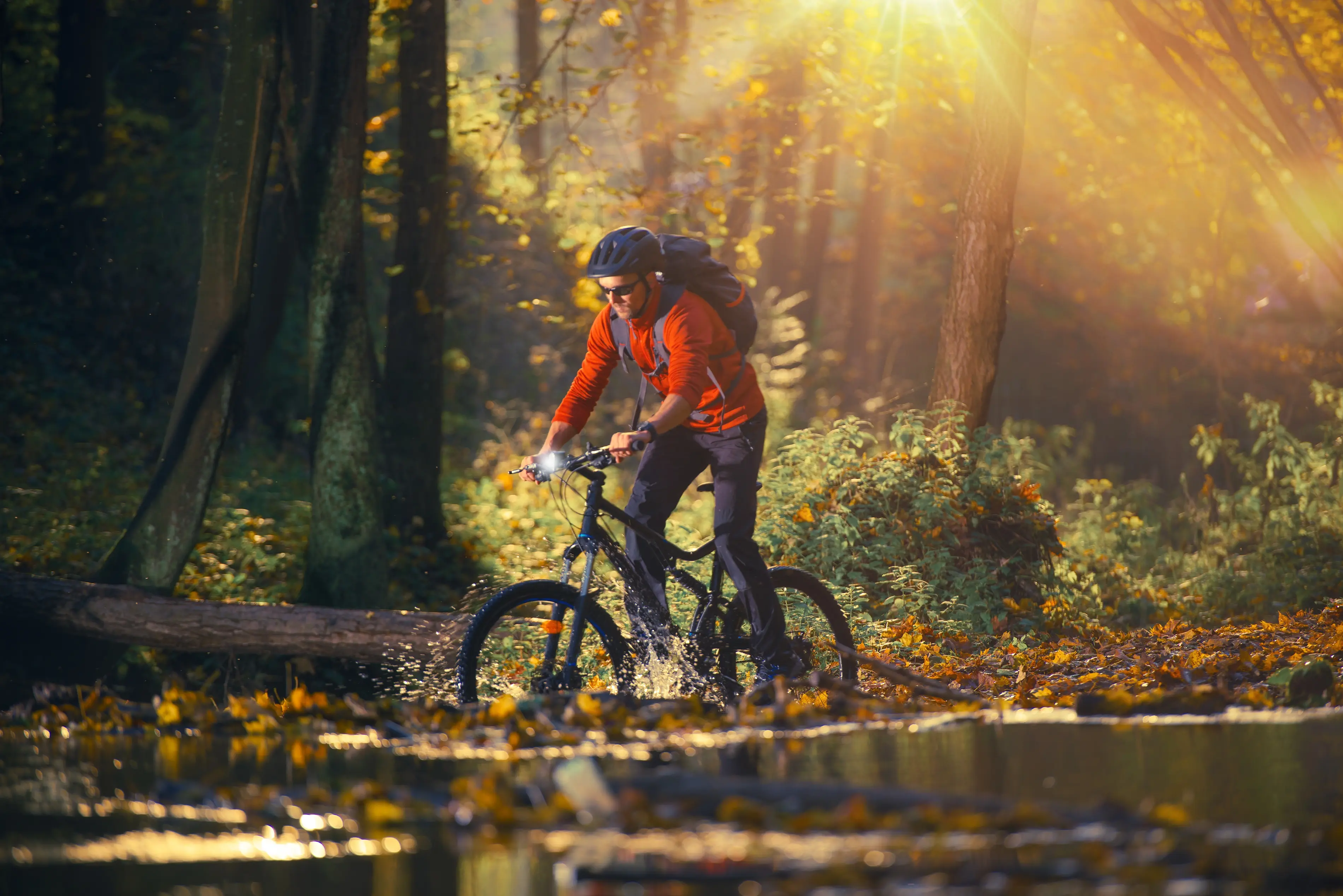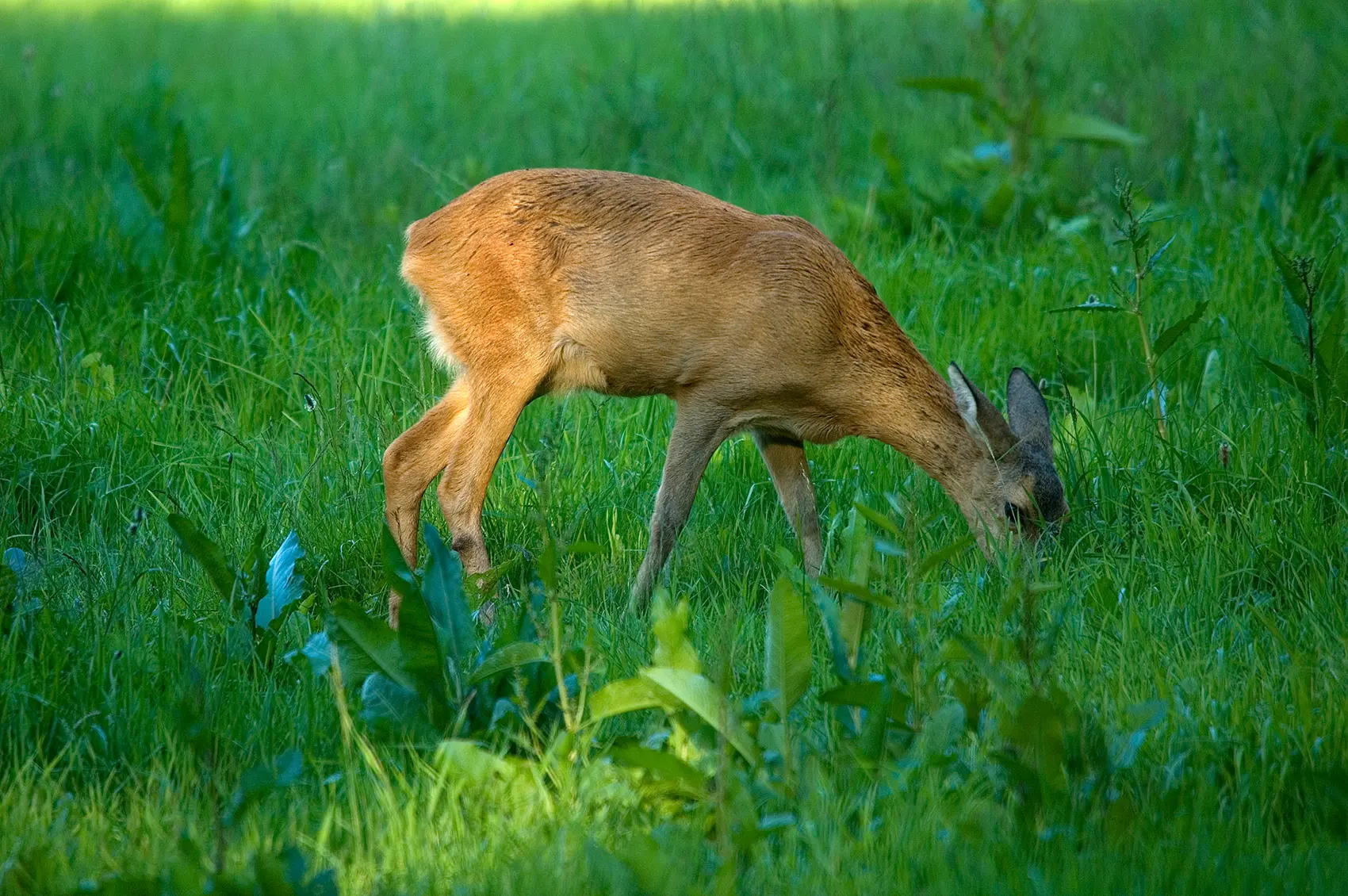Disturbance in the recreational forest
The trend towards a 24-hour leisure society is threatening wildlife in urban natural areas. A ZHAW project aims to show how the conflicting interests involved can be better reconciled.

ZHAW Impact No. 36, March 2017
The Sihl forest is a very busy place. Here, high above the Sihl river, walkers, joggers and mountain bikers seek recreation or athletic challenges. Their activities, however, sometimes have unwanted ‘side effects’. “Our behaviour has a restrictive impact on certain animal species”, says Professor Roland Graf, head of the Research Group for Wildlife Management at ZHAW.
15 deer fitted with transmitters

In order to study the resilience of wild deer for the “Wildtier und Mensch im Naherholungsraum” project, Graf and his team equipped 15 deer in the area of the Sihl forest Wilderness Park with transmitters. An analysis has shown that the animals avoid forest pathways day and night. This is due to the fact that people can be found walking and doing sports in natural areas close to the city almost around the clock. Moreover, since deer are hunted in most forests near the city, they have retained a certain degree of shyness. The same doesn’t hold true for foxes, for instance, which nowadays have almost no more cause to fear humans in the city, where, thanks to an abundant food supply, the fox population has reached a far higher density than in the countryside.
“Deer used to be seen as all-rounders who could get used to anything”, says Graf. Now, he says, research has shown that the adaptability of these animals has its limits. Human disturbances do not threaten the existence of deer in the studied area, but the issue takes on significant relevance in the Alps. They are home to animals that require areas for undisturbed rest, especially in winter. Studies have shown that frequent disturbances can threaten the survival of sensitive species, such as the wood grouse and the black grouse.
How can the living conditions of wild animals in urban natural areas be improved? People should stay on the official pathways when they go out for walks or sport activities. Graf and his project partner, Professor Reto Rupf, an expert in visitor management and the head of the ZHAW Environmental Planning research group, argue for better steering of visitor traffic – but not through overregulation and a “forest of signs”. Rupf proposes subtler methods, such as deliberately placing fallen tree trunks, piles of snow or blackberry bushes along the sides of pathways. Moreover, he suggests that managers of the areas should ensure that they offer attractive leisure possibilities: “If there are no challenging routes available for ambitious bikers, they will make their own”, he says.
Usage concepts need to be well thought-out
Balancing all the interests often requires lengthy negotiations. In the Wilderness Park, for example, the maintenance of certain pathways has been deliberately abandoned. For some, this makes the forest more exciting, while others voice criticism because familiar pathways are disappearing as a result. “In principle, it is up for discussion whether the trail network in the Central Plateau region really needs to be as dense as it is”, says Graf. Not the least of considerations is the cost of maintenance. In this respect, the project in the Sihl forest, which will be concluded in the course of this year, also serves as a model. The importance of a well thought-out usage of urban natural areas becomes clear in view of new developments in the outdoor industry: electric mountain bikes or stronger LED lights, for instance, will further boost the trend towards a 24-hour leisure society.